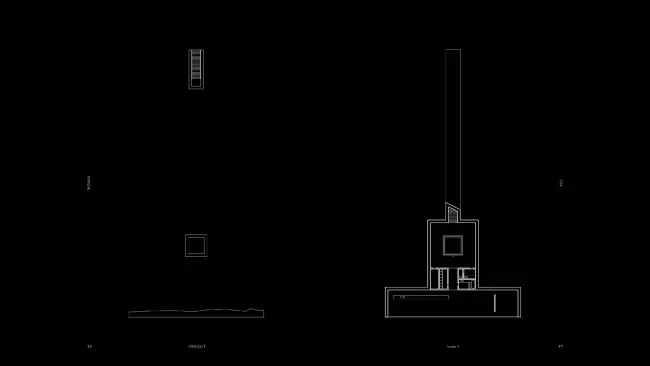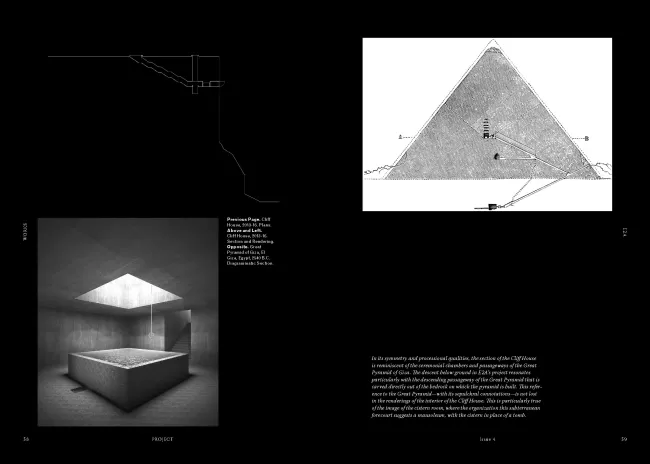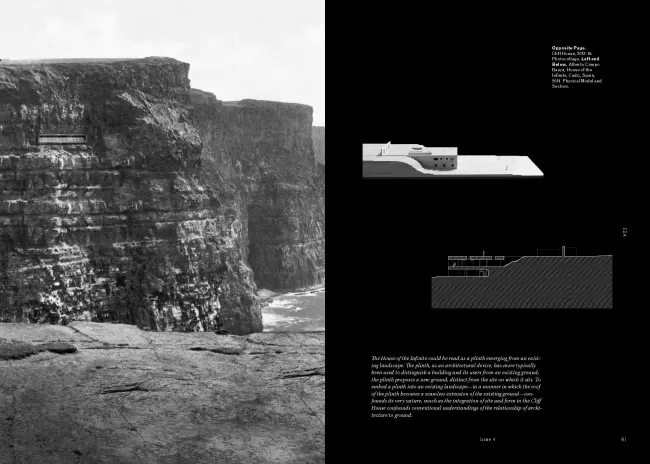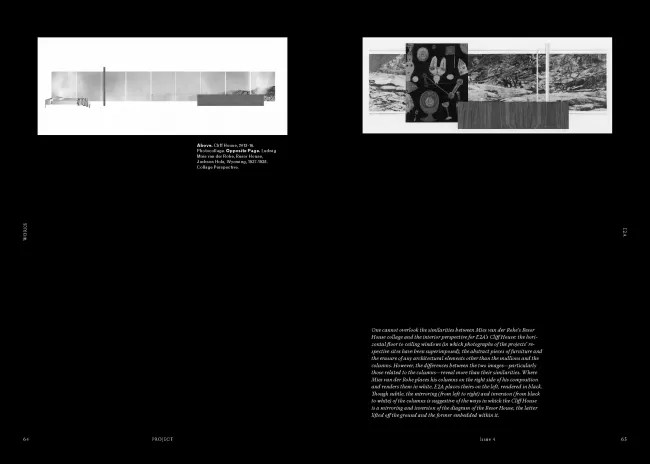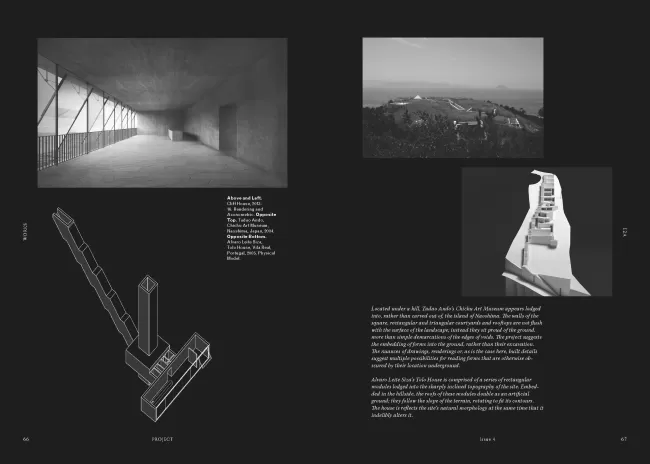Cliff House
Cliff House a retreat in the cliffs of Moher, Ireland is featured in the forth issue of Project.
Project is a new journal for architecture. Project investigates the possibilities for developing a critical position in contemporary architecture. It focuses on publishing young architects who take strong positions and engage in debate and critical evaluation of the field through both design and writing.
Project is edited by three architects living and working in New York and Los Angeles, and is published by Consolidated Urbanism, Inc., a registered 501(c)3 organization.
orders: Project - A Journal for Architecture
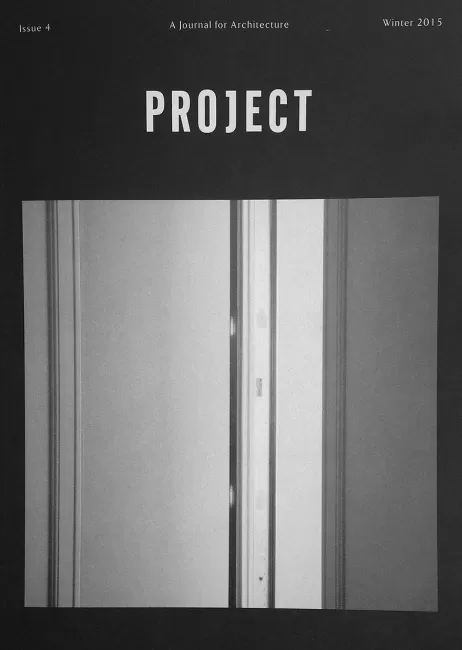
E2A Architects
Cliff House
Text by the editors of Project. Unless otherwise noted, all work courtesy of the architect.
The site of E2A’s Cliff House is, as the name would suggest, a sheer rock face (on the North Atlantic coast of Moher, Ireland). The long approach to the house across the field atop the cliffs recalls a classical promenade, but rather than terminating in a planar facade or an object in a landscape, the driveway of the Cliff House leads to a void in the ground and presents an uninterrupted view to the edge of the cliff. One immediately enters into the house, rather than approaching and moving around it. The void is the top of a stairway, the longest segment of linear, processional parti that leads deep into the ground and, after being punctuated once by a lightwell and cistern, ends in a wide room embedded in the cliff face. This open plan living space has wall-to-wall operable windows that give views over the water (or directly into the fog that gathers along the cliffs), with no trace of land below (or above). In turn, the exterior elevation of this room—a slice of glass in the cliff face—can only be seen from the sea. Understanding of the form of the house is deferred in this procession; there is no stable vantage point from which to apprehend it.
At first glance, the project exhibits a dryness that suggests what Robert Venturi called “forced simplicity.”1 E2A use words such as “subtle” and “simple” almost insistently to describe the Cliff House; they acknowledge that programmatically “very little is necessary: a stairway as access, a cistern to collect rainwater, cold storage rooms for provisions, a bathroom and a large space as a balcony overlooking the ocean.” When first looking at the project, it is difficult to see past the symmetrical parti, the austerity of which is reinforced by the lack of human presence in any representation of the house (fitting for a project that appears as much a tomb as a home). But examining the Cliff House comprehensively—through its plans, sections, models, diagrams and renderings—one comes to understand that the project contains the kinds of contradictions that would, at first glance, seem meticulously suppressed by its stark form and representation. Such a reading of the Cliff House reveals the conversations that a building can have with itself through the multiple forms of representation that architecture demands. By engaging this conversation, one comes to understand that this house is not a matter of either-or, black or white. It is a flickering between, both-and, solid and void.
The Cliff House is at once subterranean and engenders the perception, from within the living space, of being completely removed from the ground, an effect achieved through relatively simple manipulations of the form of the house in relation to the site, which carry through the varied representations of the project in different, and at times disjunctive, ways. These representations suggest a reticence on the part of the
architects to present the house as either a negative or positive form, subtractive or additive with respect to the site. The section foregrounds the cliff itself, describing a series of spaces carved directly from rock. There are no walls (or floors or ceilings) drawn, the house is simply represented as shaped voids excavated from solid mass. This site, however, disappears in the plan. Walls are given a uniform offset thickness, with no trace of the mass of the earth that is so apparent in the section. The tomb-like house that is shown in the section is re-presented as a conventionally constructed building, isolated on an empty page. These discordances are reinforced by the axonometric drawing and model of the project, in which the house floats as a positive form that nonetheless recalls the topography of the site from which it is excavated, bringing to mind the making solid of space in the sculptures of Rachel Whiteread, the volumetric models of Luigi Moretti and, perhaps most immediately, cast models of ant farms.
Most interesting, in this respect, is a collage depicting an interior perspective, clearly derived from a collage of Ludwig Mies van der Rohe’s Resor House. This interior perspective of the Cliff House, in which ground, ceiling and wall disappear into the white of the paper (or, in this case, the digital page of a Photoshop file), depicts only a long wall of glass through which one sees the sky, punctuated by a few objects in the living space, stretching across the page. The sparse composition of the collage suggests that the view through this window-wall results from the paper of the drawing being torn away, the page, like the earth, a solid material to be excavated by the architect until it reveals a view into a world beyond it. The image oscillates between the additive process of constructing a collage and the subtractive effect that the composition of the college conveys. The flatness of the image, by turn, reveals the careful calibration of the procession through the house, which terminates in a view of a landscape (or, rather, sea- or skyscape) flattened and framed as an image, just as it begins with an uninterrupted view across the site to the horizon of the cliff edge. Architectural form itself is rendered a technique of representation, collapsing the distance between drawing and building.
The spare compositions of Mies van der Rohe’s collages suggest an ethereal quality to his architecture, an effect reinforced by the reflective and transparent materials of his projects and their dissociation from the grounds of their sites. The Cliff House can be read in similar ways, though it achieves these effects through at times inverted means. In both cases, architecture itself is presented as a kind of apparition—a reading enabled by multivalent forms and modes of representation. In the case of the Cliff House, this suggests the possibility of architecture and its occupants occupying two states simultaneously (neither typical of a space for living), floating in air and being buried in the ground.
© All rights reserved. Project – A Journal for Architecture, New York / Los Angeles. Made available by Project – A Journal for Architecture, New York / Los Angeles, published in issue Four (Winter 2015)
project: Cliff House
